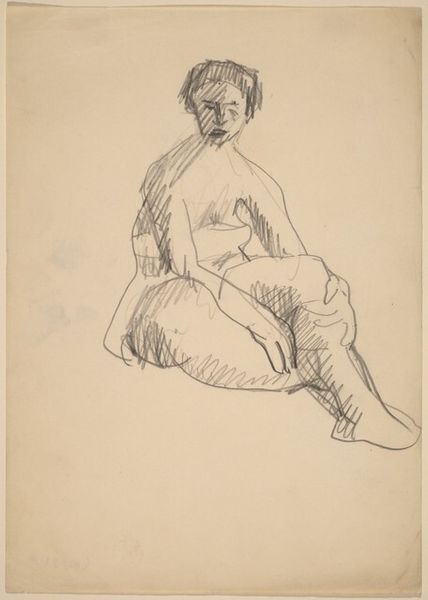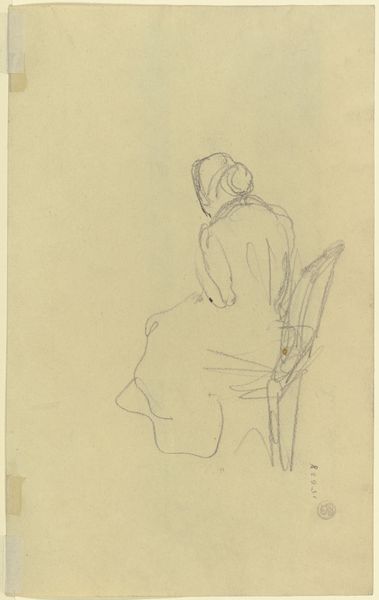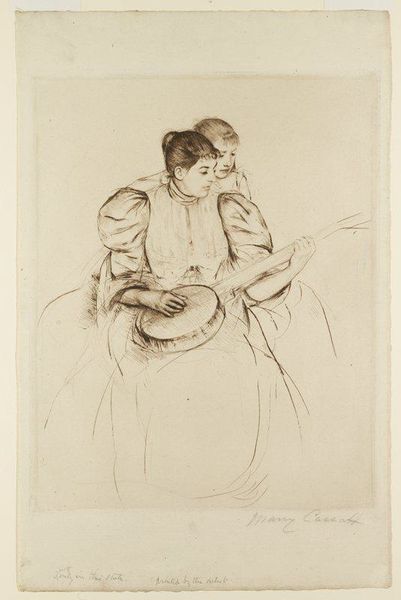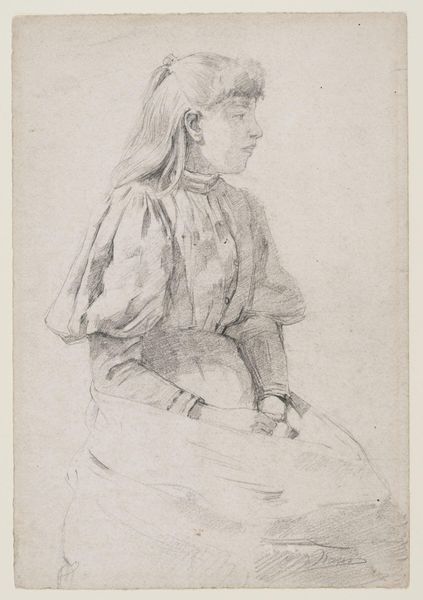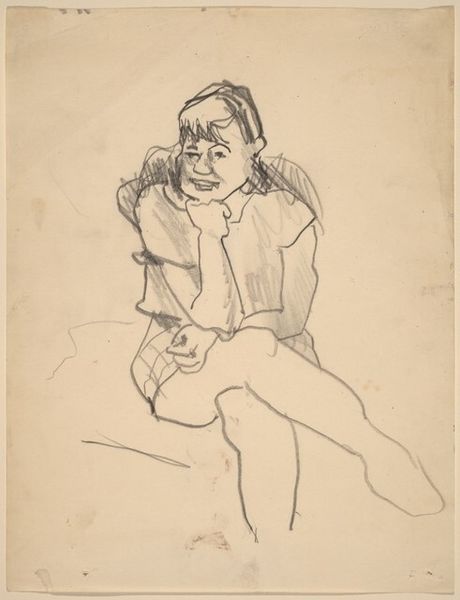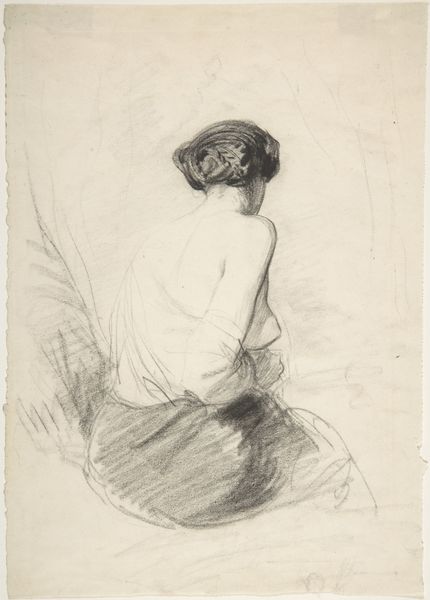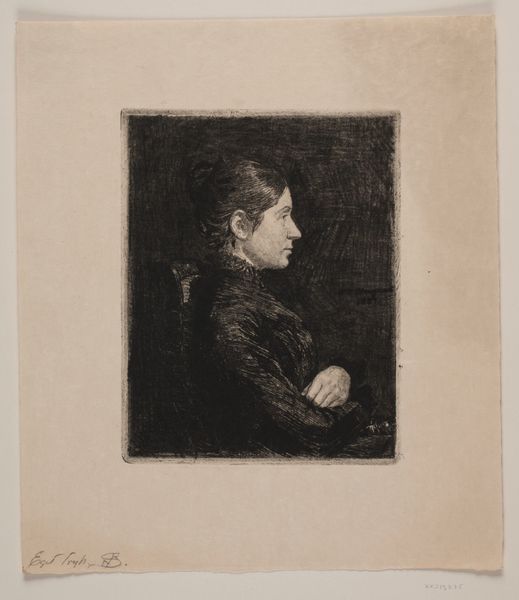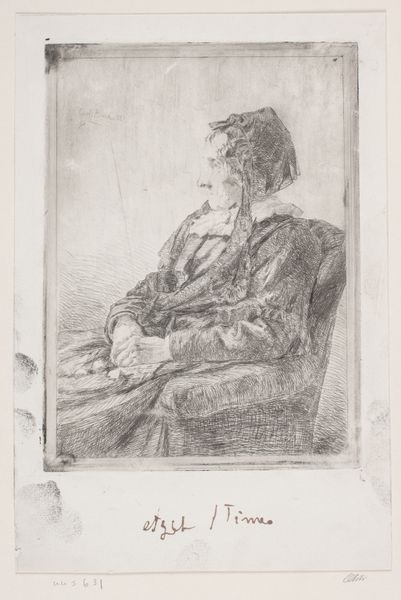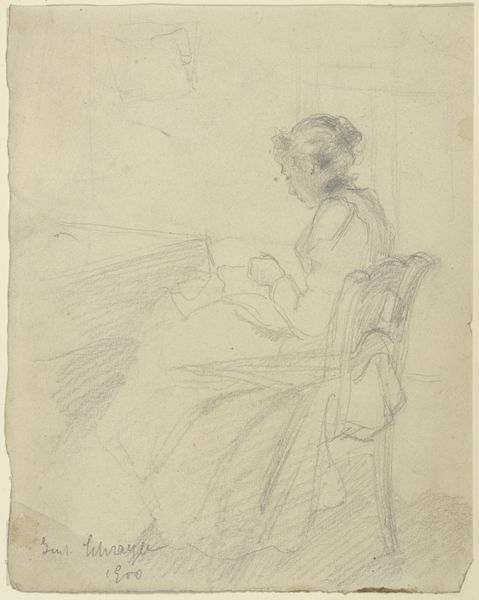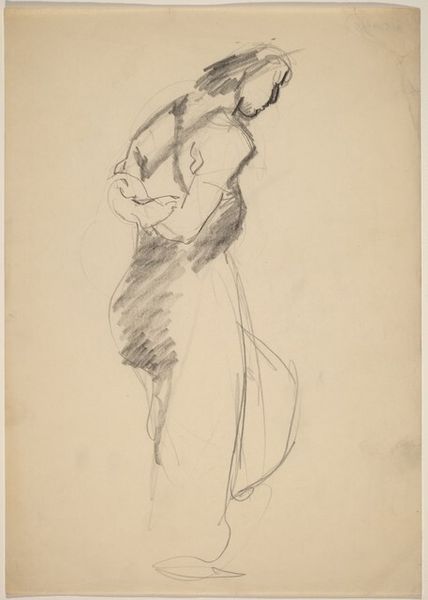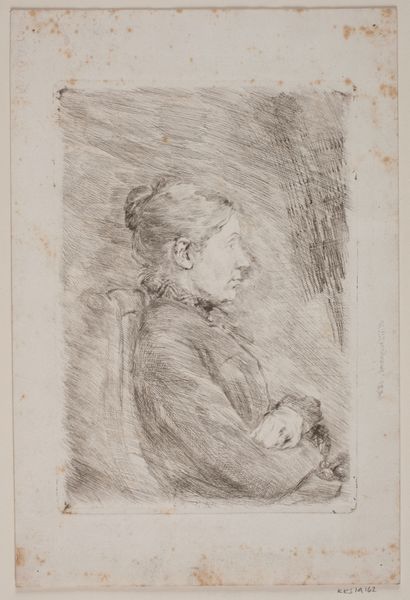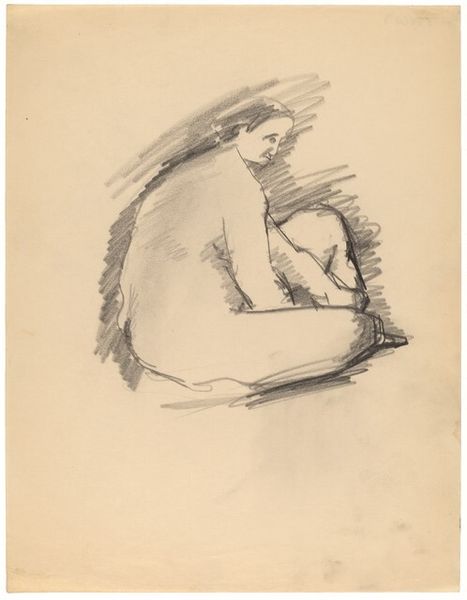
drawing, print, paper, engraving
#
portrait
#
drawing
# print
#
impressionism
#
paper
#
france
#
engraving
Dimensions: 266 × 177 mm (plate); 315 × 225 mm (sheet)
Copyright: Public Domain
Curator: This is Marcellin Desboutin’s "Portrait of Berthe Morisot," created around 1876. It’s a drypoint engraving on paper, currently residing here at the Art Institute of Chicago. Editor: Immediately striking. The portrait evokes a sense of intimacy through the stark lines and composition. It almost feels like a fleeting, private moment. Curator: The very medium reinforces that immediacy. Drypoint is known for its burr, that delicate ridge of metal pushed up by the needle, which catches ink and creates a velvety line. It’s inherently ephemeral, wearing down quickly, so each print is subtly unique. Editor: The visible lines certainly add to the impression of light and shadow defining the form. Look how the face and hands are more defined than the rest of the subject; it is not perfect, nor does it try to be; this brings the feeling that it's just a portrait in its most pure essence. This allows a fascinating balance between definition and fluidity. It brings to my mind Barthes ideas. Curator: Considering the context of Impressionism, with its focus on capturing the transient effects of light and the modern experience, this portrait does seem particularly revealing of both Desboutin and Morisot's interior worlds. They were both on the margins of the traditional academic art world and associated with impressionists like Manet. Morisot especially was part of the inner circle of this art movement. Editor: I agree. There’s also a psychological component; in some interpretations of Impressionism, figures dissolve or meld in with the context to represent modernity as the psychological perception of our rapidly transforming societies and experience. It's there subtly in the contrast of the hat to the undefined background. Curator: Precisely. Berthe Morisot herself was a symbol, wasn't she? One of the few female Impressionists who constantly had to push past cultural conventions to gain recognition in the salons. Her strength as an artist feels almost embedded in those dark, etched lines, don’t you think? The gaze returns back at you, a mirror image of an active, contemporary subject that goes beyond a passive objectified portrait. Editor: Indeed. Analyzing the composition and texture adds another layer of appreciation to an already evocative piece. It’s as much about the process and the material as it is about capturing a likeness. Curator: I've certainly reconsidered this work and how the context enhances its power and meaning for audiences across generations. It's the beauty of witnessing the cultural dialogue between the artwork and its viewers.
Comments
No comments
Be the first to comment and join the conversation on the ultimate creative platform.
